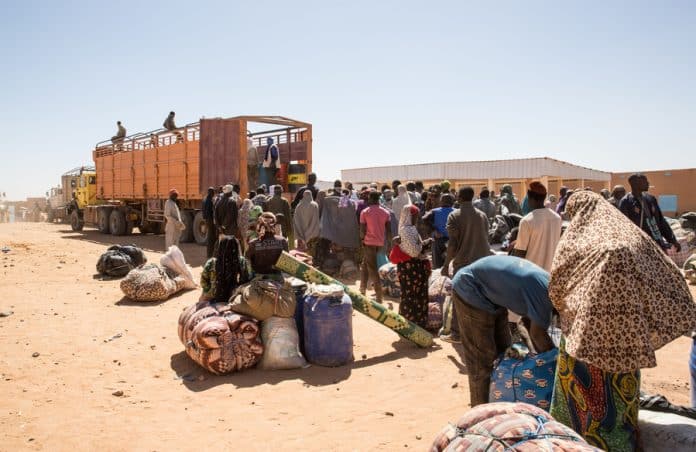“On this journey, no-one cares if you live or die”. This is the title of a new report released on 5 July 2024 by UNHCR, the UN Refugee Agency, the International Organization for Migration (IOM) and the Mixed Migration Centre (MMC).
The report highlights extreme forms of violence, human rights violations and exploitation faced by refugees and migrants coming from the Horn of Africa, East and West Africa, not just at sea but also on land routes to Africa’s Mediterranean coast.
Two times more migrants die in the Sahara than at sea
With more people estimated to cross the Sahara Desert than the Mediterranean Sea – and deaths of refugees and migrants in the desert presumed to be double those happening at sea – the report casts light on the much less documented and publicized perils facing refugees and migrants on these land routes.
“In total, 1,180 persons are known to have died while crossing the Sahara Desert for the period January 2020 to May 2024, but the number is believed to be much higher. During the same period, around 7,115 people on the move were reported to have died or gone missing in the Mediterranean Sea.”
Of the thousand deaths reported on land, 42% occurred in vehicle accidents, 24% because of harsh environmental conditions, including exposure, dehydration, and starvation, and 12% due to violence.
The report explains that “on land, due to the remoteness of the routes, challenging or lack of access to official and unofficial detention facilities, infrequent or absence of reports from authorities or media coverage, gathering information on deaths is extremely difficult and numbers are likely to severely under-represent the situation”.
Spanning a 3-year data collection period (January 2020-March 2023) with 31 542 interviews of migrants and refugees in 217 distinct locations across Africa and Europe, the report also warns of an increase in the number of people attempting these perilous land crossings and the protection risks they face.
Deteriorating situations in countries of origin
The growing number of people attempting to make the crossings is in part the result of deteriorating situations in countries of origin and host countries – including the eruption of new conflicts in the Sahel and Sudan, the devastating impact of climate change and disasters on new and protracted emergencies in the East and Horn of Africa, as well as the manifestation of racism and xenophobia affecting refugees and migrants.
The report also notes that across parts of the continent, refugees and migrants are increasingly traversing areas where insurgent groups, militias and other criminal actors operate and where human trafficking, kidnapping for ransom, forced labour and sexual exploitation are rife. Some smuggling routes are now shifting towards more remote areas to avoid active conflict zones or border controls by state and non-state actors, subjecting people on the move to even greater risks.
Despite those risks, the report underlines that “refugees and migrants continue to undertake these dangerous journeys, including many who flee conflicts from countries on which the UNHCR has issued non-return advisories, such as Burkina Faso, Mali and the Sudan.”
Violence by criminal gangs, armed groups, police, and the army
Among the litany of risks and abuses reported by refugees and migrants are torture, physical violence, arbitrary detention, death, kidnapping for ransom, sexual violence and exploitation, enslavement, human trafficking, forced labour, organ removal, robbery, arbitrary detention, collective expulsions and refoulement.
Criminal gangs and armed groups are the main perpetrators of these abuses, in addition to security forces, police, military, immigration officers and border guards.
“Tales of rape, torture to extract ransom from the families and long periods of arbitrary detention in shocking conditions are recurrent”, according to the report.
Insufficient Humanitarian Aid
Despite the international community’s commitments to save lives and address vulnerabilities in accordance with international law, the three organizations warn that current international action is inadequate.
The organizations are calling for concrete, routes-based protection responses to save lives and reduce suffering, as well as a push to address the root causes of displacement and drivers of irregular movements– through positive action on peacebuilding, respect for human rights, governance, inequality, climate change and social cohesion, as well as the creation of safe pathways for migrants and refugees. These should span countries of origin, asylum, transit, and destination.
The report pleads for “continuous efforts to provide reliable information to those planning to move, debunk “fake news” posted by smugglers, counter the role of social media in idealizing irregular movements or life in destination countries; and investigate and prosecute those responsible for crimes against refugees and migrants, including human traffickers.”
Additional links:

